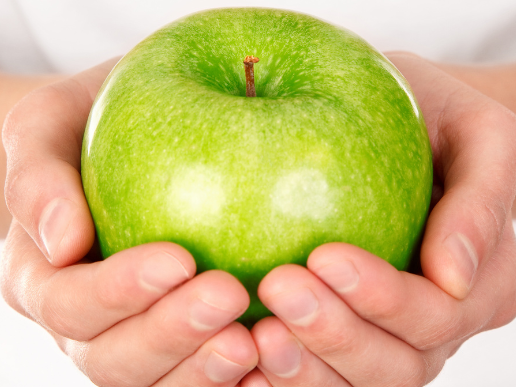Tackle food waste, feed hungry students with a share table

While it’s best to tackle food waste on the front end with good menu planning and procurement, some waste can be inevitable. Share tables are increasingly popular and a great way to handle excess or unwanted food.
What is a share table?
Share table is a general term to describe how uneaten food items from Child Nutrition Programs can be collected to reduce food waste. However, it does not need to be an actual table! It can be a bin, cart, or just space on a surface like a countertop.
Sometimes schools and local health departments are hesitant about share tables because they don’t know if they are allowed, or if there might be liability concerns. Share tables are encouraged by USDA as long as the practice complies with local health and food safety codes. Schools are protected from civil liability under the Bill Emerson Good Samaritan Food Donation Act of 1996, as clarified in the Richard B. Russell National School Lunch Act.
Share tables have several important benefits:
- Share tables reinforce community values like courtesy, kindness, and respect.
- Hungry students can get extra servings at no additional cost.
- Child nutrition program dollars are maximized when more food is eaten and less is waste. Food costs may also be reduced when eligible items are re-serviced.
- Less food in the trash can mean fewer custodian trips to the dumpster.
- Over time, generating less waste decreases the environmental footprint of the program.
What foods can be placed on a share table?
Acceptable foods are allowed per USDA guidance. However, your local health department may have stricter rules and/or food safety requirements.
ACCEPTABLE FOODS
- Whole fruits with inedible peels (bananas, oranges, etc.)
- Whole fruits with edible skin/peels (apples, peaches, etc.)
- Packaged non-perishable items (breakfast bars, applesauce, cereal, etc.)
- Packaged cold items (milk, sliced/cut fruits and vegetables in sealed packages, yogurt, etc.)
- Packaged hot items (omelet, grilled cheese, etc.)
NOT ACCEPTABLE
- Any items that have been opened
- Items in re-sealable packaging
- Items served without a lid or top
- Foods served directly on the tray
- Items brought from home
Certain foods and beverages need extra care taken for food safety.
Time/temperature control for safety (TCS) foods must be kept at the proper temperatures. These include cold items like milk and yogurt, as well as sliced/cut fruits and vegetables in sealed packages. Packaged hot items are also TCS foods, but these are less commonly collected on share tables.
You will need to check with your health department to see if they will allow these items to be collected. If yes, you will also need to establish how food safety will be managed with time or temperature controls.


